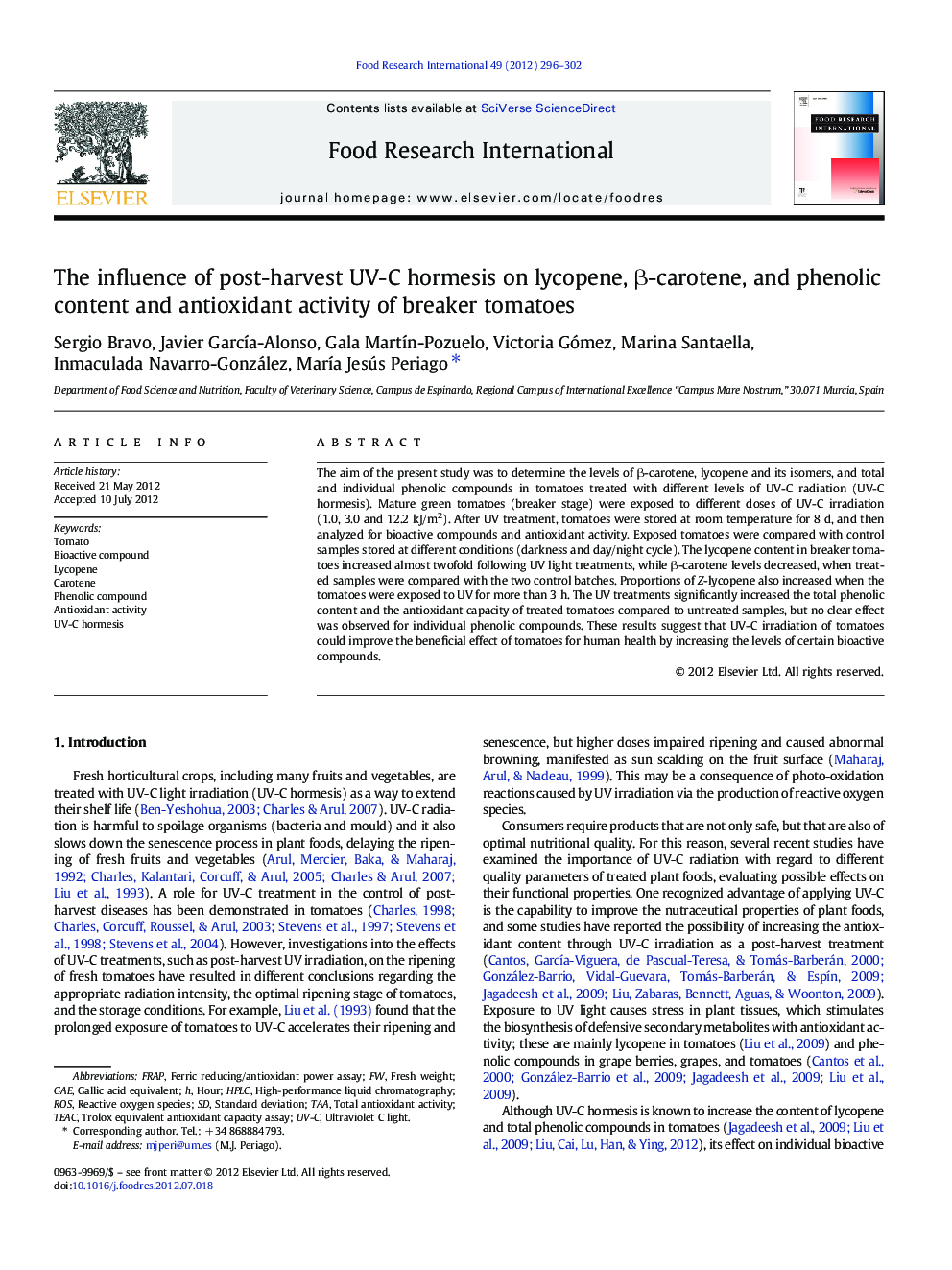| Article ID | Journal | Published Year | Pages | File Type |
|---|---|---|---|---|
| 6399091 | Food Research International | 2012 | 7 Pages |
The aim of the present study was to determine the levels of β-carotene, lycopene and its isomers, and total and individual phenolic compounds in tomatoes treated with different levels of UV-C radiation (UV-C hormesis). Mature green tomatoes (breaker stage) were exposed to different doses of UV-C irradiation (1.0, 3.0 and 12.2 kJ/m2). After UV treatment, tomatoes were stored at room temperature for 8 d, and then analyzed for bioactive compounds and antioxidant activity. Exposed tomatoes were compared with control samples stored at different conditions (darkness and day/night cycle). The lycopene content in breaker tomatoes increased almost twofold following UV light treatments, while β-carotene levels decreased, when treated samples were compared with the two control batches. Proportions of Z-lycopene also increased when the tomatoes were exposed to UV for more than 3 h. The UV treatments significantly increased the total phenolic content and the antioxidant capacity of treated tomatoes compared to untreated samples, but no clear effect was observed for individual phenolic compounds. These results suggest that UV-C irradiation of tomatoes could improve the beneficial effect of tomatoes for human health by increasing the levels of certain bioactive compounds.
⺠Lycopene of breaker tomatoes can be improved with the UV-C treatment. ⺠Total phenolic compounds increase in breaker tomatoes after UV-C treatment. ⺠Antioxidant activity increases after UV-C exposition.
